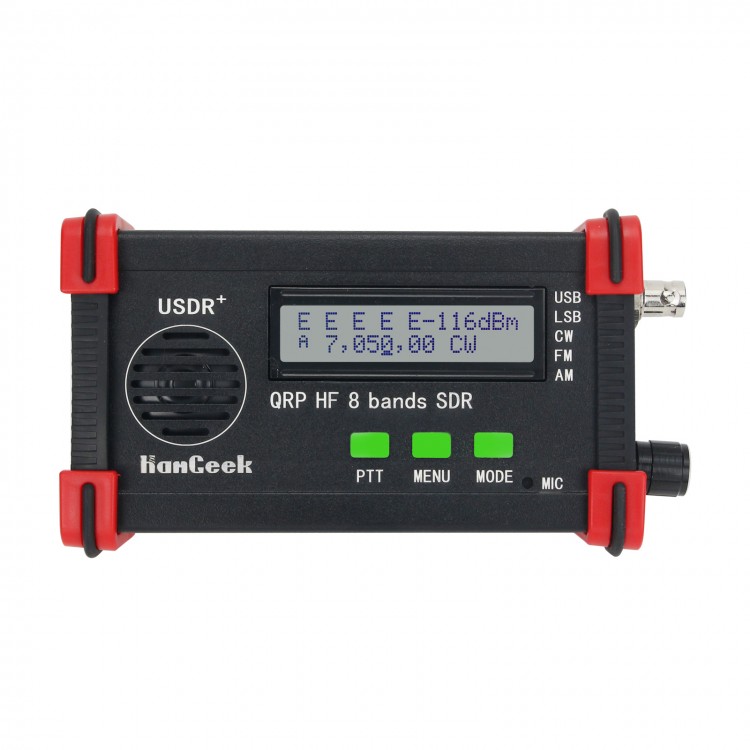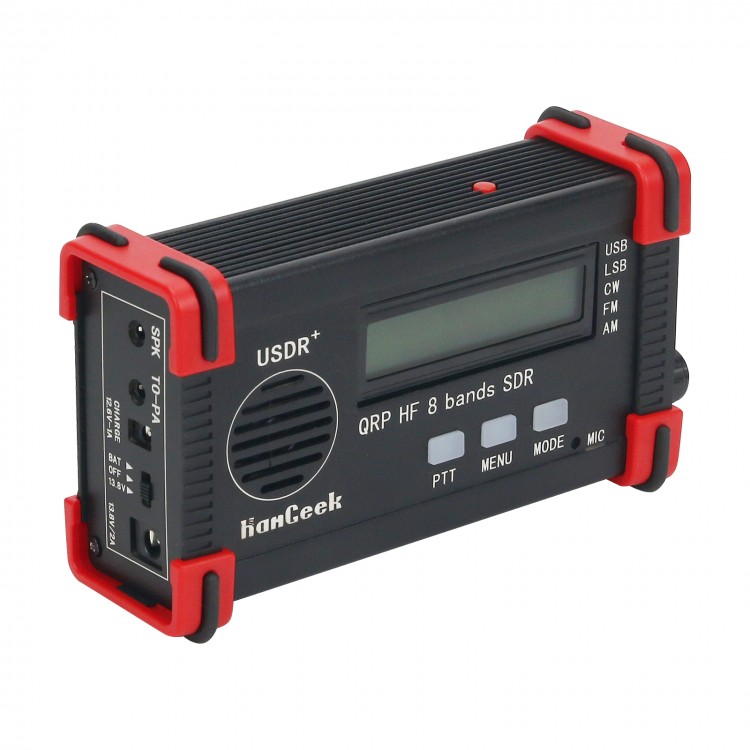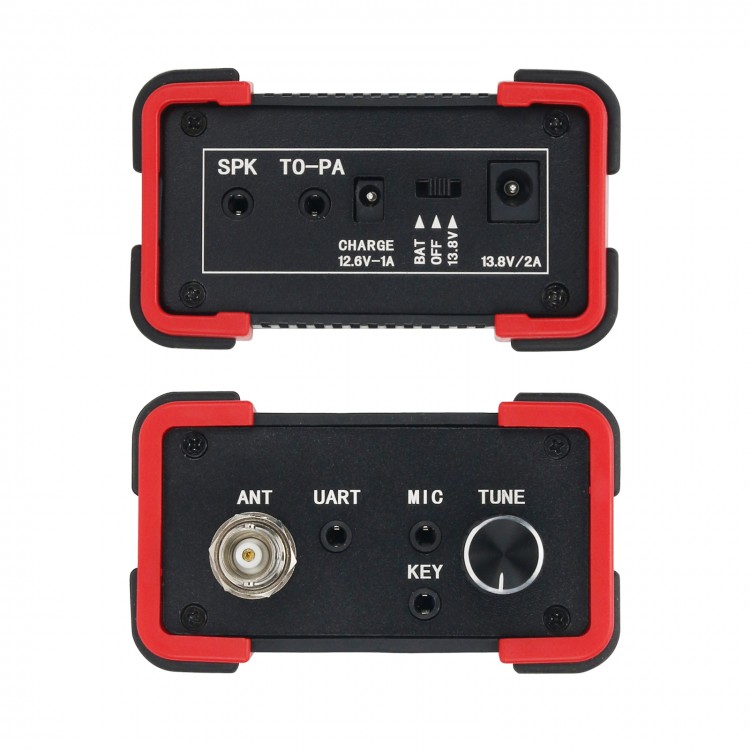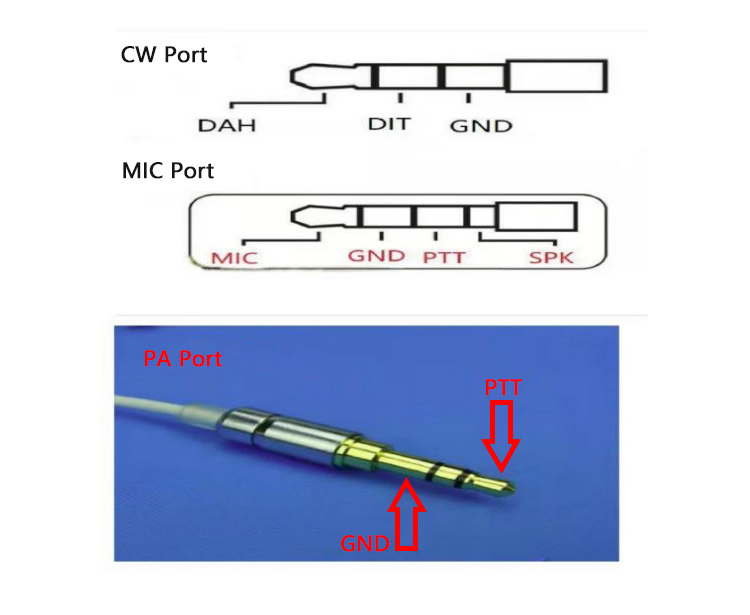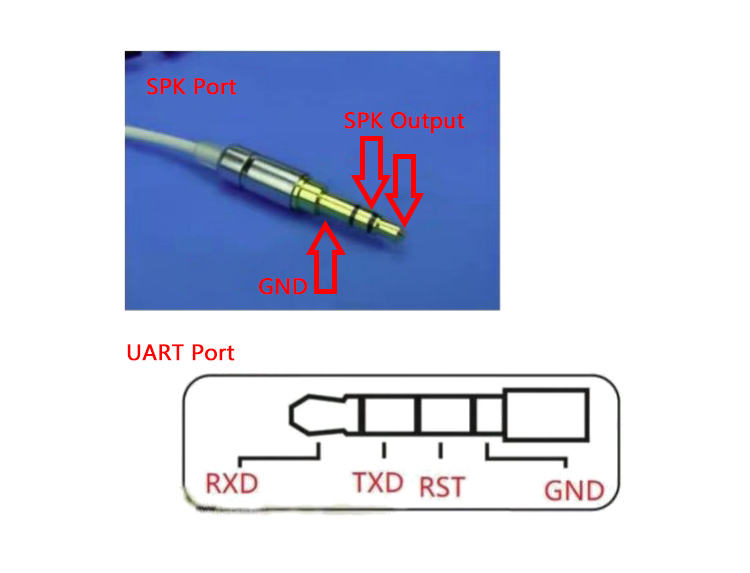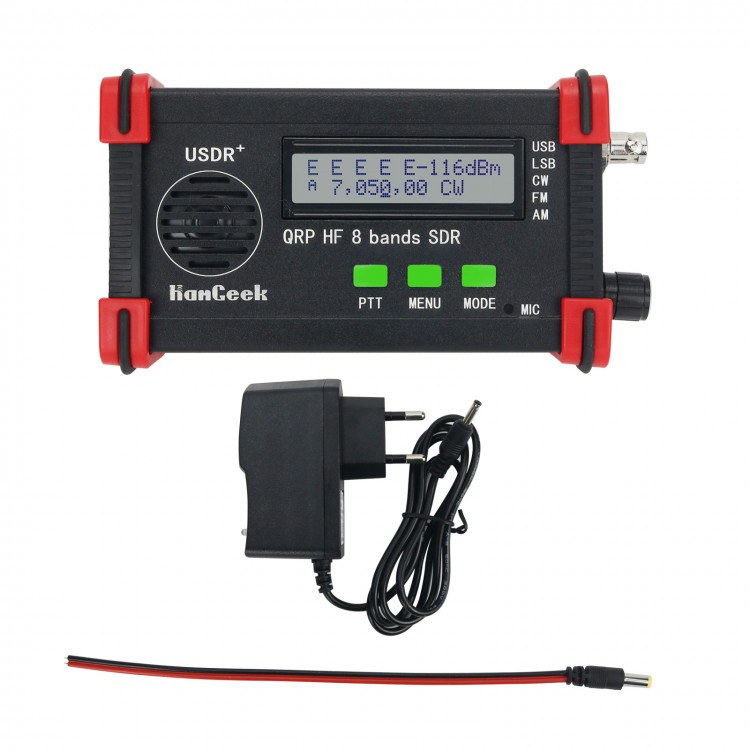
| Quantity | 3+ units | 10+ units | 30+ units | 50+ units | More |
|---|---|---|---|---|---|
| Price /Unit | $120.93 | $118.46 | $114.76 | $109.83 | Contact US |
 MA-12 7MHz-50MHz Portable GP Antenna HF Antenna Shortwave Antenna Used Outdoors (Black)
$159.84
MA-12 7MHz-50MHz Portable GP Antenna HF Antenna Shortwave Antenna Used Outdoors (Black)
$159.84
 ANTUNER AT-100M Universal HF Antenna Tuner 1.8Mhz-30Mhz 100W SWR Power Meter for Yaesu Kenwood Xiegu
$81.62
ANTUNER AT-100M Universal HF Antenna Tuner 1.8Mhz-30Mhz 100W SWR Power Meter for Yaesu Kenwood Xiegu
$81.62
 ATU-100 HF Automatic Antenna Tuner 1.8MHz-30MHz Open Source N7DDC Amateur Radio Communications
$72.47
ATU-100 HF Automatic Antenna Tuner 1.8MHz-30MHz Open Source N7DDC Amateur Radio Communications
$72.47
HamGeek USDR+ 5W QRP HF 8-Band SDR Transceiver FT8 USB LSB HF Transceiver without Microphone
Description:
HamGeek USDR+ is a mini 8-band SSB/CW QRP transceiver for radio amateurs. It includes 8 amateur frequencies for receiving and transmitting.
It is easy to carry for outdoor use thanks to ultra-small size. The SDR transceiver is designed with a 4000mAh built-in lithium battery, a 1602N LCD screen and a built-in speaker. It can be connected to a PC to control radio frequencies using digital mode software such as FT8, JS8 and FT4. See the pictures below for specific wiring definition.
It supports 80m, 40m and 20m bands. Its power will be 3-5W when its built-in battery is used. You can use an external power supply, instead of the built-in battery. In the shortwave communication state, when a 13.8V power supply is used, the power of the device will be higher than 3-5W. The closer the frequency is to 10m band, the less power it will have. Any mode of 60m, 30m, 17m, 15m and 10m bands is a gift. AM and FM modes for all frequencies are gifts. Because gifts are not part of the scope of sale, buyers cannot have any disputes about the content of the gifts. Thank you for your understanding!
Attention:
- It is forbidden to use it to directly test the unknown antenna standing wave. And it is forbidden to use the unknown antenna to operate the equipment, because the antenna that is not suitable for the frequency will burn out the power amplifier (the correct usage is to use an antenna analyzer to adjust the antenna frequency to the applicable standing wave and then plug the antenna into the equipment).
- It is forbidden to transmit at the same frequency at very close proximity to another transceiver, as that would burn the receiver of that transceiver.
- It is forbidden to modify the menu data, unless you are familiar with the device menu, especially the 8.2 menu value should be around 220.
Advantages:
1. There is SWR and power indication in CW mode
2. Large battery capacity
3. Continuous tone can be adjusted
4. Adjustable volume of continuous sidetone
5. For antennas of this frequency. Power MOSFET is not BS170! It's not easy to break
6. Exquisite alumina housing
7. With a PTT button and a built-in microphone. You can use it with your hands
8. SSB/CW shortwave transceiver has a 1602 screen, a built-in battery, a charger, a built-in microphone and a speaker. It can be connected with automatic button or CW decoder.
9. The aluminum alloy shell with laser marking, all aluminum buttons and translucent silicone buttons.
Device Menu (if the device is not normal, follow the menu to restore all):
1.1 Volume (0... 10...16): it is better to debug to 12
1.2 Modes (LSB, USB, CW, AM, FM)
1.3 Filtering audio pass-bands (all, 50, 100, 200, 500, 1800, 2000, 2400)
1.4 Bands (160, 80, 60, 40, 30, 20, 17, 15, 12, 10, 6 meters)
1.5 Adjust step sizes 10M, 1M, 0.5M, 100k, 10k, 1k, 0.5k, 100, 10, 1
1.6 VFO (A, B)
1.7 RIT (On, Off)
1.8 AGC (Off, Fast, Slow)
1.9 NR (noise reduction level) (0-8)
1.10 ATT input attenuator (0, -13, -20, -33, -40, -53, -60, -73dB)
1.11 ATT2 (0, 1, 2...16). It is appropriate to adjust the speaker howling to 5-6
1.12 S-METER field strength meter (OFF, dBm, S, S-bar, wpm)
1.13 SWR METER: OFF, FWD-SWR, FWD-REF, VFWD-VREF
2.1 CW decoder (ON, OFF)
2.2 CW sidetone (600,700)
2.4 SEMI QSK (half-signal gap) (On, Off)
2.5 CW keyer speed (1... 20...60)
2.6 Keyer type (Iambic-A, -B, Straight)
2.7 Morse key dot-dash swap (on, off)
2.8 Practice mode (ON, OFF)
2.9 Sidetone volume (0... 12...16)
3.1 VOX (ON, OFF)
3.2 Noise threshold (0-4-255)
3.3 TX driver (0-4-8)
4.1 CQ call interval time (0... 5...60 seconds)
4.2 CQ text message editing
8.1 PA amplitude level (0-219), RF output minimum
8.2 PA amplitude level (0... 180...255), the maximum value of RF output is 220 by default, and the value will affect power
8.3 Refer to the actual crystal frequency 25000000. The number cannot be changed unless there is frequency offset
8.4 I/Q phase offset (0... 90...180 degrees)
10.1 Display backlight (On, Off)
Features:
- Excellent PCB layout design in line with the principles of high-frequency circuit design to ensure excellent performance
- Whether using internal battery or external 13.8V power supply, it can reach 3-5W in 8 bands. SOT-223 and TO-220 package pads are also reserved for retrofits
- High transmitting efficiency: 80m/60m/40m/30m/20m efficiency is higher than 80%, 17m efficiency is higher than 70%, and 15m/10m efficiency is higher than 60%
- High-precision original TCXO for KDS: Frequency accuracy is better than 1PPM and frequency stability is better than 0.5PPM
- Ultra-small size: 83 x 38 x 124mm/3.3 x 1.5 x 4.9" (excluding protrusions)
- Abundant interfaces: CAT, PTT OUT, MIC/KEY and K-type handheld microphone
- LPF part is all made of 100V C0G/NP0 capacitors
- It uses original magnetic latching relay for Omron
- The noise of op amp chip is lower than that of the LM4562
- Built-in speaker with cavity
- 11.1V (12.6V) built-in lithium battery
- BNC antenna interface
Functions:
- Support full mode: USB, LSB, CW, AM and FM (SSB mode has good reception effect, poor transmitting effect. AM, CW, and FM modes are gifted and the effects of these modes are not guaranteed)
- DSP filter: 4000, 2500, 1700, 500, 200, 100 and 50Hz pass band
- DSP Functions: Automatic Gain Control (AGC), Noise Reduction (NR), Voice Operated Xmit (VOX), RX Attenuator (ATT), TX Noise Gate, TX Drive Control, Volume Control and dBm/S Meter.
- SSB to side-band/carrier suppression transmission: better than -45dBc, IMD3 (two-tone) -33dBc and reception better than -50dBc
- Support multi-band: continuously adjustable through 10m-80m frequency band (20kHz...99MHz, with performance loss)
- Open-source firmware: built with Ar-duino IDE; experiments are allowed, new features can be added, contributions can be shared via Github; software complexity: 2000 lines of code
- Software-based VOX can be used as quick full control (QSK and semi-QSK operation) or auxiliary RX/TX switched to operate digital mode (no CAT or PTT interface required), external PTT output/PA control-delay with TX
- All-digital and software-based SSB transmission stage: by controlling the phase of SI5351 PLL (via small frequency changes on 800kbits/s I2C) and the amplitude of PA (via PWM PA key shaping circuit)
- All-digital and software-based SDR receiver stage (optional): Sample I/Q (complex) signals from an orthogonal sample detector digital mixer and mathematically perform a 90-degree phase shift (Hilbert transform) in the software and cancel out one by adding a side-band
- Three independent switchable analog front-end receiver attenuators (0dB, -1 3dB, -20dB, -33dB, -53dB, -60dB and -73dB)
- Receiver noise floor MDS: -135dBm at 28MHz (200Hz BW)
- Receiver front-end selectivity: +/-2kHz steep -45dB/decade roll-off from tuning frequency
- Blocking dynamic range: 20kHz offset 123dB and 2kHz offset 78dB
- VFO A/B+RIT and Split, as well as the corresponding relay with filter switching via I2C
- CAT supports (TS-480 protocol for KENWOOD) operation: Currently, the following functions have been assigned to shortcut buttons (L=Left, E=Encoder & R=Right) and menu items: Menu function buttons
1.1 vol
1.2 mode
1.3 filterbw
1.4 band
1.5 tune rate
1.6 vfo mode
1.7 rtt
1.8 agc
1.9 nr
1.10 att
1.11 att2
1.12 s-meter
1.13 swr meter
2.4 semi ask
2.8 practice
3.1 vox
3.2 noise gate
3.3 tx drive
3.5 mox
8.1 ta bias
8.2 pa max
8.3 ref frq
8.4 iq phase
8.6 cat115k
8.7 quad
10.1 light
Package Included:
- 1 x Main unit
- 1 x Power adapter
- 1 x Power cable
Note:
- Handheld microphone is not included.